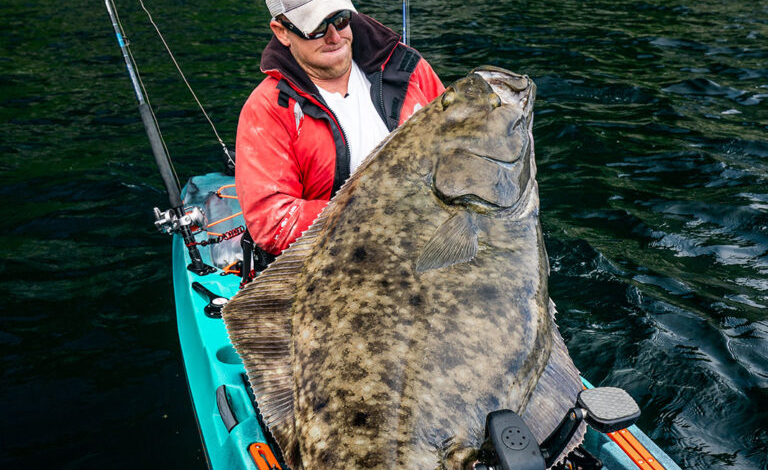Alaska Halibut Fishing: The Ultimate Guide for Anglers

Fishing for halibut in Alaska is a bucket-list experience for many anglers. With its vast and cold waters, Alaska provides some of the richest fishing grounds for Pacific halibut, offering enthusiasts the chance to land some of the biggest and most rewarding catches. This comprehensive guide will take you through everything you need to know about Alaska Halibut Fishing, helping you plan the adventure of a lifetime with Hunt Nation.
Introduction to Alaska Halibut Fishing
Alaska is known for its pristine natural environment and thriving marine ecosystems, making it one of the premier destinations for halibut fishing in the world. Every year, anglers flock to the state to take advantage of the massive Pacific halibut population, which thrives in the cold, nutrient-rich waters of the North Pacific and Bering Sea.
Alaska’s halibut fishery is famous not only for its abundance but also for the size of the fish. Halibut weighing over 300 pounds—often called “barn doors”—aren’t uncommon, and even smaller “chickens,” ranging from 15 to 40 pounds, provide great sport and tasty fillets.
Understanding the Halibut Species
The Pacific Halibut: Size, Habitat, and Lifespan
The Pacific halibut is the largest flatfish species, with adults typically weighing between 30 and 100 pounds, though much larger individuals are caught regularly. These bottom-dwelling fish have a distinctive flattened body and both eyes located on the right side of their heads, making them perfectly adapted for life on the seafloor.
Halibut can live up to 55 years, and as they age, they grow larger and heavier. The fish spend most of their time near the ocean floor at depths of 90 to 900 feet, though they can occasionally be found in shallower waters, especially during spawning.
Best Time for Alaska Halibut Fishing
Halibut fishing in Alaska can be done year-round, but the prime season typically runs from May through September. These months provide the best combination of favorable weather, more predictable sea conditions, and peak halibut activity. Within this window, July and August are considered the absolute best for anglers looking to maximize their chances of landing a trophy catch.
Weather and Tides
Weather patterns and tides play a crucial role in determining halibut behavior. Fishing during slack tides—periods when the tide is not moving—often yields the best results as the fish are more actively feeding. Calm, sunny days can enhance visibility and ease the process of spotting and landing a halibut, though seasoned anglers often find success in less-than-perfect conditions too.
Popular Locations for Halibut Fishing in Alaska
Alaska boasts several world-renowned halibut fishing spots, each with its own unique features. The most popular areas include Homer, Seward, Kodiak, and Sitka.
- Homer: Often referred to as the “Halibut Fishing Capital of the World,” Homer is famous for its large halibut and easily accessible fishing grounds.
- Seward: Located on Resurrection Bay, Seward offers both halibut and salmon fishing, making it a popular choice for multi-species trips.
- Kodiak: Known for its rugged beauty and abundant marine life, Kodiak provides anglers with excellent opportunities to catch halibut while enjoying Alaska’s wilderness.
- Sitka: Nestled on the southeast coast, Sitka is a great choice for anglers looking for both halibut and deep-sea species like lingcod and rockfish.
Types of Halibut Fishing Charters
When planning your Alaska Halibut Fishing trip with Hunt Nation, it’s essential to choose the right type of charter. There are two main options: guided and self-guided charters. Both offer unique experiences, depending on your skill level and preferences.
Guided Charters
A guided charter typically includes an experienced captain and crew who are familiar with the best fishing spots, techniques, and safety protocols. These charters are ideal for beginners or those who want to maximize their chances of success.
Self-Guided Charters
For more experienced anglers, a self-guided charter provides greater autonomy. You’ll be given a boat equipped with GPS, fish finders, and all the necessary fishing gear. This option allows you to fish at your own pace, though it requires more experience and familiarity with local waters.
Essential Gear for Halibut Fishing
Fishing for halibut requires specialized gear due to the size and strength of the fish. You’ll need sturdy rods and reels capable of handling the weight and fight of these massive creatures. Most anglers prefer rods between 6 and 8 feet in length, paired with heavy-duty reels and 50- to 100-pound test line.
Bait Types
The type of bait you use can make a significant difference in your success. Popular natural baits include herring, squid, and octopus, while artificial jigs and lures can also be effective.
Techniques for Catching Halibut
One of the most popular techniques for catching halibut is jigging, where the angler drops a weighted lure to the ocean floor and moves it in a way that mimics the movements of prey. Drifting and anchoring are also common methods, depending on the conditions and the area you’re fishing in.
Successfully landing a halibut, especially a large one, requires patience and skill. Once hooked, these fish often put up a powerful fight, diving deep and pulling hard on the line.
Tidal Influence on Halibut Fishing
Halibut are known to be more active during certain tidal conditions. Understanding how to read tide charts can significantly improve your fishing success. Fishing just before or after a tide change, when the current is weaker, tends to be more productive.
Halibut Fishing Regulations and Limits in Alaska
To preserve halibut populations, the state of Alaska enforces strict regulations on size and bag limits. Anglers must possess a valid Alaska fishing license, and daily bag limits typically allow for one or two halibut, depending on the location and time of year.
Professional SEO Services leading digital marketing agency in Pakistan.



